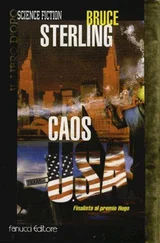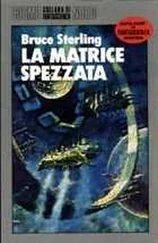Bruce Sterling - Essays. FSF Columns
Здесь есть возможность читать онлайн «Bruce Sterling - Essays. FSF Columns» весь текст электронной книги совершенно бесплатно (целиком полную версию без сокращений). В некоторых случаях можно слушать аудио, скачать через торрент в формате fb2 и присутствует краткое содержание. Жанр: Фантастика и фэнтези, на английском языке. Описание произведения, (предисловие) а так же отзывы посетителей доступны на портале библиотеки ЛибКат.
- Название:Essays. FSF Columns
- Автор:
- Жанр:
- Год:неизвестен
- ISBN:нет данных
- Рейтинг книги:3 / 5. Голосов: 1
-
Избранное:Добавить в избранное
- Отзывы:
-
Ваша оценка:
- 60
- 1
- 2
- 3
- 4
- 5
Essays. FSF Columns: краткое содержание, описание и аннотация
Предлагаем к чтению аннотацию, описание, краткое содержание или предисловие (зависит от того, что написал сам автор книги «Essays. FSF Columns»). Если вы не нашли необходимую информацию о книге — напишите в комментариях, мы постараемся отыскать её.
Essays. FSF Columns — читать онлайн бесплатно полную книгу (весь текст) целиком
Ниже представлен текст книги, разбитый по страницам. Система сохранения места последней прочитанной страницы, позволяет с удобством читать онлайн бесплатно книгу «Essays. FSF Columns», без необходимости каждый раз заново искать на чём Вы остановились. Поставьте закладку, и сможете в любой момент перейти на страницу, на которой закончили чтение.
Интервал:
Закладка:
Small towers sometimes use their bracing bars as natural step-ladders, but big towers have a further burden. It takes a strong man, with a clear head, 3/4 of an hour to climb a thousand feet, so any tower over that size definitely requires an elevator. That brings the full elaborate rigging of guide rails, driving mechanism, hoisting cables, counterweights, rope guards, and cab controls, all of which add to the weight and strain on the structure. Even with an elevator, one still needs a ladder for detail work. Tower hands, who have a very good head for heights, prefer their ladders out on the open air, where there are fewer encumbrances, and they can get the job done in short order. However, station engineers and station personnel, who sometimes need to whip up the tower to replace a lightbulb or such, rather prefer a ladder that's nestled inside the tower, so the structure itself forms a natural safety cage.
Besides the weight of the tower, its elevator, the power cables, the waveguides, the lights, and the antennas, there is also the grave risk of ice. Ice forms very easily on towers, much like the icing of an aircraft wing. An ice-storm can add hugely to a tower's weight, and towers must be designed for that eventuality.
Lightning is another prominent hazard, and although towers are well-grounded, lightning can be freakish and often destroys vulnerable antennas and wiring.
But the greatest single threat to a tower is wind- load. Wind has the advantage of leverage; it can attack a tower from any direction, anywhere along its length, and can twist it, bend it, shake it, pound it, and build up destructive resonant vibrations.
Towers and their antennas are built to avoid resisting wind. The structural elements are streamlined. Often the antennas have radomes, plastic weatherproof covers of various shapes. The plastic radome is transparent to radio and microwave emissions; it protects the sensitive antenna and also streamlines it to avoid wind-load.
An antenna is an interface between an electrical system and the complex surrounding world of moving electromagnetic fields. Antennas come in a bewildering variety of shapes, sizes and functions. The Andrew Corporation, prominent American tower builders and equipment specialists, sells over six hundred different models of antennas.
Antennas are classified in four basic varieties: current elements, travelling-wave antennas, antenna arrays, and radiating-aperture antennas. Elemental antennas tend to be low in the frequency range, travelling-wave antennas rather higher, arrays a bit higher yet, and aperture antennas deal with high-frequency microwaves. Antennas are designed to meet certain performance parameters: frequency, radiation pattern, gain, impedance, bandwidth, polarization, and noise temperature.
Elemental antennas are not very "elemental." They were pretty elemental back in the days of Guglielmo Marconi, the first to make any money broadcasting, but Marconi's radiant day of glory was in 1901, and his field of "Marconi wireless" has enjoyed most of a long century of brilliant innovation and sustained development. Monopole antennas are pretty elemental -- just a big metal rod, spewing out radiation in all directions -- but they quickly grow more elaborate. There are doublets and dipoles and loops; slots, stubs, rods, whips; biconal antennas, spheroidal antennas, microstrip radiators.
Then there's the travelling-wave antennas: rhombic, slotted waveguides, spirals, helices, slow wave, fast wave, leaky wave.
And the arrays: broadside, endfire, planar, circular, multiplicative, beacon, et al.
And aperture variants: the extensive microwave clan. The reflector family: single, dual, paraboloid, spherical, cylindrical, off-set, multi-beam, contoured, hybrid, tracking.... The horn family: pyramidal, sectoral, conical, biconical, box, hybrid, ridged. The lens family: metal lens, dielectric lens, Luneberg lens. Plus backfire aperture, short dielectric rods, and parabolic horns.
Electromagnetism is a difficult phenomenon. The behavior of photons doesn't make much horse sense, and is highly counterintuitive. Even the bedrock of electromagnetic understanding, Maxwell's equations, require one to break into specialized notation, and the integral calculus follows with dreadful speed. To put it very simply: antennas come in different shapes and sizes because they are sending signals of different quality, in fields of different three-dimensional shape.
Wavelength is the most important determinant of antenna size. Low frequency radiation has a very long wavelength and works best with a very long antenna. AM broadcasting is low frequency, and in AM broadcasting the tower *is* the antenna. The AM tower itself is mounted on a block of insulation. Power is pumped into the entire tower and the whole shebang radiates. These low-frequency radio waves can bounce off the ionosphere and go amazing distances.
Microwaves, however, are much farther up the spectrum. Microwave radiation has a short wavelength and behaves more like light. This is why microwave antennas come as lenses and dishes, rather like the lens and retina of a human eye.
An array antenna is a group of antennas which interreact in complex fashion, bouncing and shaping the radiation they emit. The upshot is a directional beam.
"Coverage is coverage," as the tower-hands say, so very often several different companies, or even several different industries, will share towers, bolting their equipment up and down the structure, rather like oysters, limpets and barnacles all settling on the same reef.
Here's a brief naturalist's description of some of the mechanical organisms one is likely to see on a broadcast tower.
First -- the largest and most obvious -- are things that look like big drums. These are microwave dishes under their protective membranes of radome. They may be flat on both sides, in which case they are probably two parabolic dishes mounted back-to-back. They may be flat on one side, or they may bulge out on both sides so that they resemble a flying saucer. If they are mounted so that the dish faces out horizontally, then they are relays of some kind, perhaps local telephone or a microwave long- distance service. They might be a microwave television- feed to a broadcast TV network affiliate, or a local cable-TV system. They don't broadcast for public reception, because the microwave beams from these focused dishes are very narrow. Somewhere in the distance, probably within 30 miles, is another relay in the chain.
A tower may well have several satellite microwave dishes. These will be down near the base of the tower, hooked to the tower by cable and pointed almost straight up. These satellite dishes are generally much bigger than relay microwave dishes. They're too big to fit on a tower, and there's no real reason to put them them on a tower anyway; they'll scarcely get much closer to an orbiting satellite by rising a mere 2,000 feet.
Often, small microwave dishes made of metal slats are mounted to the side of the tower. These slat dishes are mostly empty space, so they're less electronically efficient than a smooth metal dish would be. However, a smooth metal dish, being cupshaped, acts just like the cup on a wind-gauge, so if a strong wind-gust hits it, it will strain the tower violently. Slotted dishes are lighter,cheaper and safer.
Then there are horns. Horns are also microwave emitters. Horns have a leg-thick, hollow tube called a wave-guide at the bottom. The waveguide supplies the microwave radiation through a hollow metallic pipe, and the horn reflects this blast of microwave radiation off an interior reflector, into a narrow beam of the proper "phase," "aperture," and "directivity." Horn antennas are narrow at the bottom and spread out at the top, like acoustic horns. Some are conical, others rectangular. They tend to be mounted vertically inside the tower structure. The "noise" of the horn comes out the side of the horn, not its end, however.
Читать дальшеИнтервал:
Закладка:
Похожие книги на «Essays. FSF Columns»
Представляем Вашему вниманию похожие книги на «Essays. FSF Columns» списком для выбора. Мы отобрали схожую по названию и смыслу литературу в надежде предоставить читателям больше вариантов отыскать новые, интересные, ещё непрочитанные произведения.
Обсуждение, отзывы о книге «Essays. FSF Columns» и просто собственные мнения читателей. Оставьте ваши комментарии, напишите, что Вы думаете о произведении, его смысле или главных героях. Укажите что конкретно понравилось, а что нет, и почему Вы так считаете.



